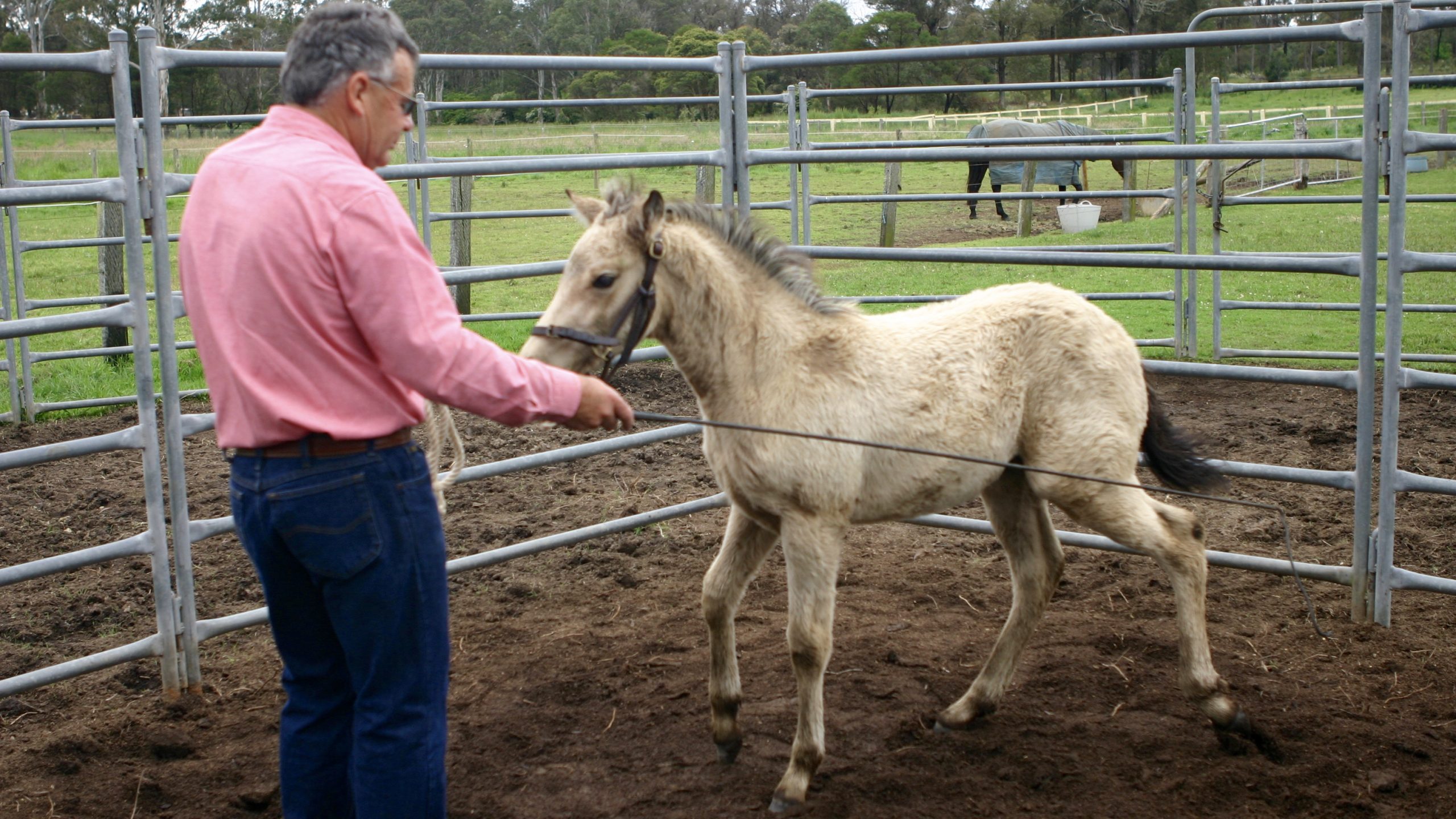Many people have an unjustified prejudice against the use of sticks and spurs in horse training.
They think that sticks and spurs are cruel and are used to punish a horse and ‘show him who’s boss’, and therefore should never be used on any horse.
Some people believe that horses are naturally afraid of sticks and spurs.
They say you must spend time rubbing a young horse with a stick to ‘get him used to it’.
This makes no sense.
Horses have no preconceived ideas and they aren’t intrinsically afraid of sticks.
However, if you try to rub a frightened horse with a stick, you’ll soon teach him to be scared of it.
When a horse is confident and relaxed and understands what you want him to do, he won’t be the least bit worried when a stick or blunt spurs are used.
I’ve handled thousands of horses and I always use a six foot (2 metre) long stick when I’m on the ground.
The stick must be introduced only when a horse is confident and relaxed.
It may take one lesson before a horse is ready to accept a stick or it may take ten lessons.
When a stick is introduced in this way, the horse won’t be frightened and he won’t shy or run away.
In fact, I’ve rarely had any horse take much notice when I first introduce a stick.
The same principle applies with blunt spurs.
Of course, a young horse should never be ridden with spurs in his early lessons.
Blunt spurs must be introduced only when a young horse has been ridden for at least three months.
Every horse must understand to move forward and to move off your legs before blunt spurs are introduced.
Then, a light touch with a blunt spur at the appropriate time can be used to reinforce your lesson.
When a horse is confident and relaxed, he may learn to ignore your leg or a kick from your boot, when you ask him to canter.
In this case, you must reinforce your lesson with a light touch from a blunt spur.
Immediately your horse canters, remove the spur from his side.
Using blunt spurs in this way won’t worry a horse and it isn’t cruel or detrimental to him.
However, it’s both cruel and detrimental to your horse and yourself, if you’re not prepared to reinforce your lessons at the appropriate time.
Understanding spurs is crucial in horse riding, that’s why it’s fully explained in my book.
You must be consistent and make sure that every step your horse takes is a step that you ask for.
If you don’t reinforce your lessons, your horse will soon learn that he doesn’t have to canter or trot when you ask.
He’ll soon learn that he can move where he wants, how he wants and it won’t be long before he kicks up or rears or runs home or won’t leave the barn.
Your horse will become confused and nervous because he’ll never be sure if he has to do as you ask or if he can do his own thing.
If you’re going to handle and ride horses, you must be prepared to use a stick or blunt spurs at the appropriate time to reinforce your lessons.

